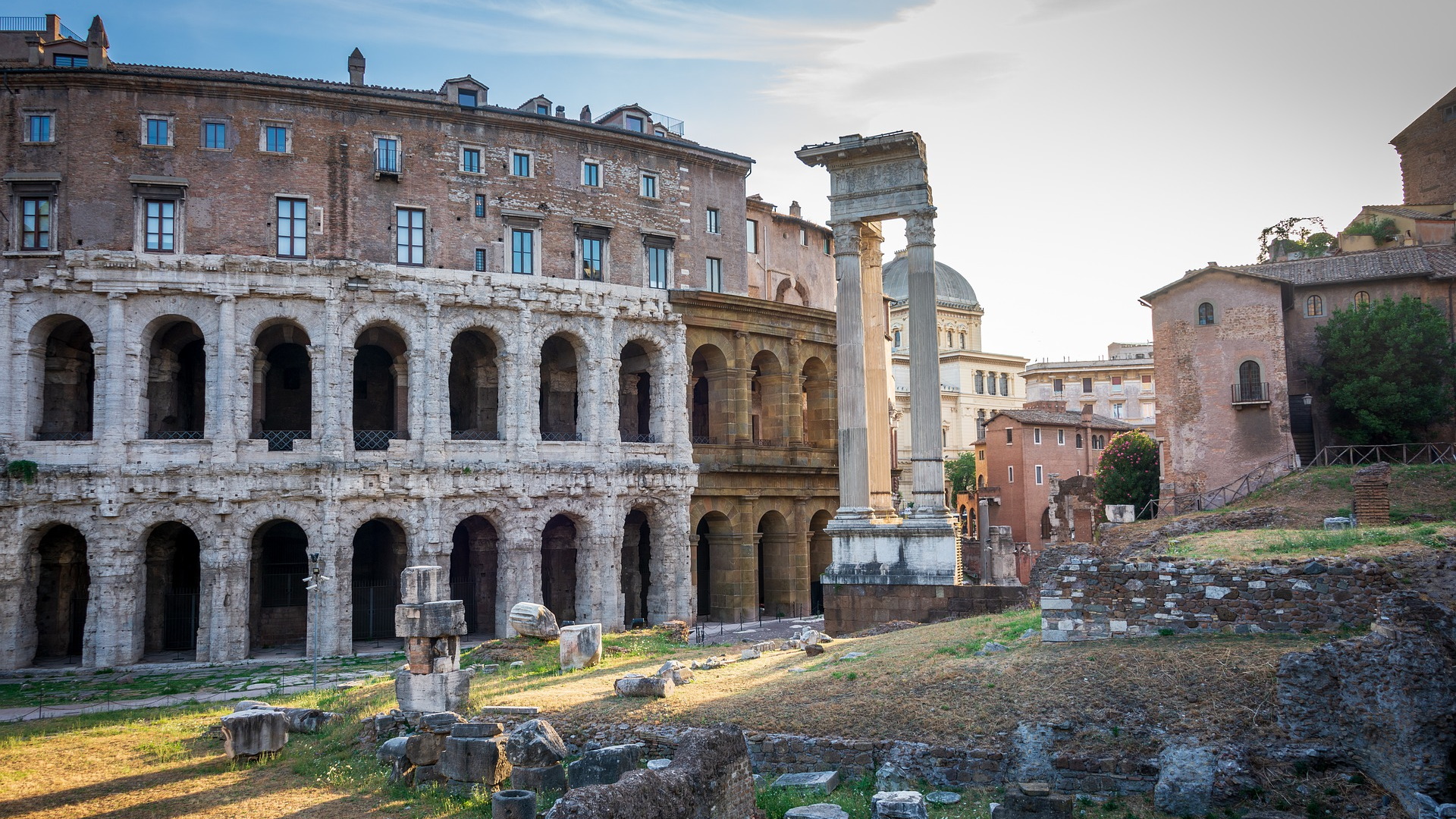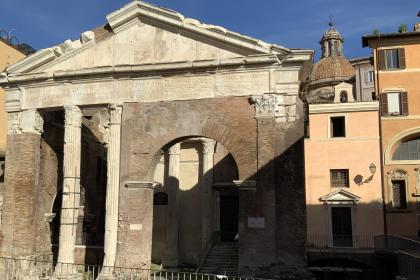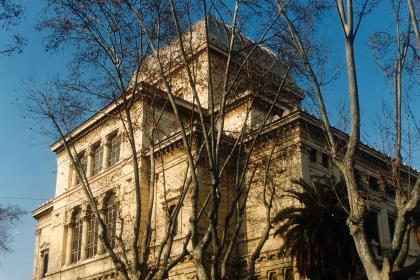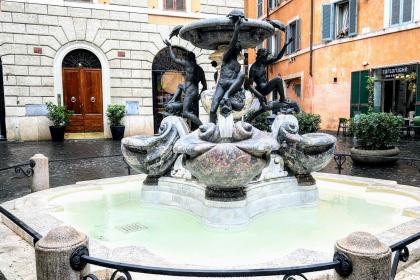
A grandiose building of ancient Rome, the Theatre of Marcellus was erected in the Campus Martius - traditionally consecrated to stage performances - on the site of the theatrum et proscenium ad Apollinis, connected to the temple of Apollo since 179 BC.
The theatre project was started by Julius Caesar, who expropriated the area and demolished the existing buildings, and was taken over by Augustus, who, with new expropriations and demolitions, enlarged the site for the construction of a larger building than the one designed by Caesar.
Probably completed as early as 17 B.C., the Theatre of Marcellus was inaugurated in 13 or 11 B.C. and dedicated to the memory of Marcus Claudius Marcellus, son of Octavia, the emperor's sister, and therefore nephew and designated successor, who died prematurely in Baia in 27 B.C.
Restored by Vespasian and Alexander Severus, still in use in the 4th century, it was transformed into a fortress by the Pierleoni and Fabi families, given its elevated position near the Tiber. In the 16th century, Baldassarre Peruzzi erected a patrician palace on its summit for the Savelli family; two centuries later, it became the property of the Orsini family. Between 1926 and 1932, after having purchased the lower part corresponding to the ancient Roman theatre, the Municipality of Rome proceeded to a complete restoration of the building, freeing it from all the structures that had piled up around it and that had also occupied some of its rooms.
The Theatre of Marcellus was a majestic building with a diameter of 130 metres, in which the Roman-type theatre was realised in a completed form. The cavea, semicircular in shape, was built on blocks of tufa, in opus reticulatum and brickwork, on which white marble tiers of seats rested. The exterior of the theatre had a travertine façade with a triple order, of which the two lower ones with arches on pillars with Doric and Ionic semi-columns are preserved today. The keystones of the lower floors were decorated with colossal marble theatre masks representing tragedy, comedy and satirical drama.
The shallow stage was decorated with columns and statues of white and polychrome marbles, two triple-aisled halls opened at the sides, and a large elevated apse against the possible flooding of the Tiber was located behind it. The theatre was covered by a velarium and had a capacity of about 15-20,000 seats.
Recently, the passage connecting Via Montanara - what remains of the piazza of the same name at the foot of the Tarpeian Rock, demolished in the 1930s - with the Portico d'Ottavia and the Jewish Quarter has reopened to the public. The pedestrian path does not interfere with the archaeological vestiges and is delimited by bollards and chains that redesign the accessibility of the area. The definition of the spaces makes it possible to get closer to the theatre to admire the majesty of the Roman architecture, right up to the edge of the fornixes, enhancing the visitor experience.
The archaeological area surrounding the Theatre of Marcellus also contains the remains of the Temples of Apollo Sosianus and Bellona.
Temple of Bellona
Built in 296 BC, the Temple of Bellona, dedicated to the ancient Roman goddess of war, was a parallelepiped with six columns on the front and eleven on the long sides, erected on a high podium with front steps. Today, only the concrete core of the podium from the Augustan period remains of the temple.
Temple of Apollo
Erected in 431 BC, the temple dedicated to the god Apollo was restored several times and rebuilt, most recently in the Augustan age by Gaius Sosius with a structure similar to the one at Bellona, with two lateral staircases. Three Corinthian columns in white marble remain of it, reconstructed in 1940.
The Portico of Octavia

 Condividi
Condividi
The Great Temple

 Condividi
Condividi
The Turtle Fountain

 Condividi
Condividi
Information
The monument can be visited only from the outside
 Condividi
Condividi
Location
To find out about all accessibility services, visit the Rome accessible section.











































